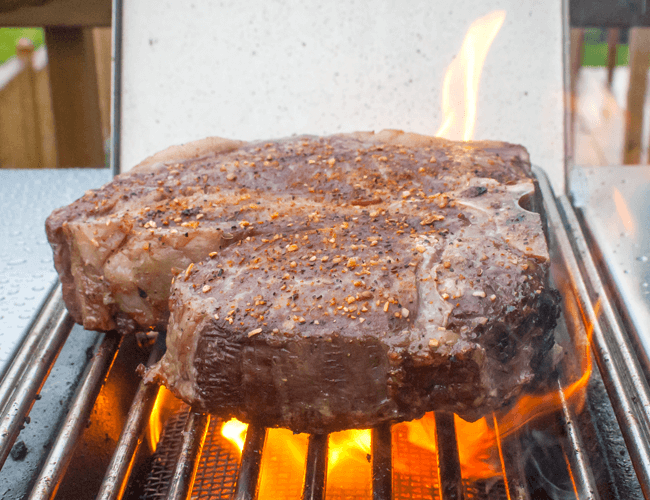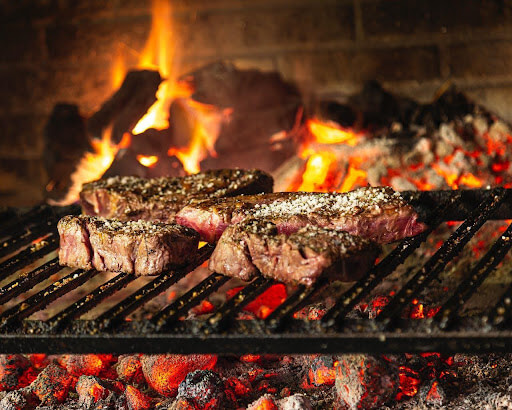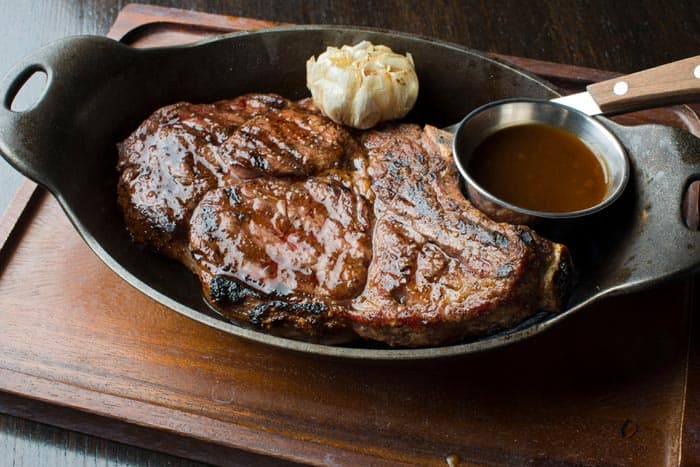When it comes to grilling, few processes are as critical to flavor creation as the Maillard reaction. This fascinating chemical reaction is the foundation of the rich, savory, and complex flavors we crave in perfectly grilled meats and vegetables. In this article, we’ll dive into the science behind the Maillard reaction in grilling, discuss ways to optimize it for enhanced flavors, and offer expert tips to elevate your grilling skills.
Understanding the Maillard Reaction
The Maillard reaction is a chemical process that takes place when proteins and sugars in food are exposed to heat, typically above 300°F (150°C). This reaction is responsible for creating the browned crust on grilled meats, the golden color of toasted bread, and the robust aroma of roasted coffee. Unlike caramelization, which breaks down simple sugars, the Maillard reaction involves a complex interaction between amino acids and reducing sugars, leading to the formation of hundreds of flavor compounds.
This reaction is integral to grilling because it occurs on the food’s surface where heat interacts directly, giving grilled dishes their distinct color, aroma, and taste.
How the Maillard Reaction Enhances Flavors in Grilled Foods
During grilling, the Maillard reaction transforms basic proteins and sugars into a spectrum of new flavors. Meats, poultry, seafood, and even certain vegetables benefit from this reaction, as it creates a mouthwatering crust or char on the surface while sealing in juices. The intense heat from grilling provides the ideal conditions for the Maillard reaction to flourish, resulting in a delicious contrast between the caramelized outer layer and the tender, juicy interior.
Several factors influence the effectiveness of the Maillard reaction in grilling:
- Temperature: A high temperature, generally above 300°F (150°C), is essential for activating the Maillard reaction. To achieve optimal grilling results, the surface temperature of the food must be high enough to promote browning, which can be achieved through direct grill grates or radiant heat.
- Dry Surface: Water inhibits browning since it evaporates at 212°F (100°C), keeping the temperature below the threshold needed for the Maillard reaction. To enhance browning, thoroughly dry the surface of your meat or vegetables before grilling.
- Protein and Sugar Content: Foods high in proteins and natural sugars—like meats, poultry, seafood, and vegetables such as onions and bell peppers—are particularly suitable for the Maillard reaction, providing the necessary compounds for rich flavor formation.

Techniques to Maximize the Maillard Reaction on Your Grill
To fully harness the Maillard reaction, it’s essential to manipulate the grilling process to boost browning without overcooking. Here are several techniques to optimize the Maillard reaction on your grill:
Preheat the Grill ThoroughlyPreheating is essential for reaching the high temperatures necessary for the Maillard reaction. Whether using a charcoal or gas grill, allow ample time for the grates to get very hot. This direct contact promotes a fast Maillard reaction, sealing in juices and creating that irresistible crust. If the grill isn’t preheated, food may cook unevenly, preventing proper browning.
Dry Food Surface Before GrillingDrying the food surface before grilling is a simple yet effective step to accelerate the Maillard reaction. Use paper towels to pat down meats and vegetables to reduce moisture, enabling faster browning. Too much moisture will cause food to steam rather than sear, which inhibits the Maillard reaction.
Smart Use of MarinadesMarinades add flavor but can prevent browning if too wet. Allow enough marinating time, then pat the food dry before grilling. Marinades high in sugars or amino acids, like those with soy sauce or honey, can promote browning but require close monitoring to avoid burning.
Avoid Overcrowding the GrillOvercrowding leads to steaming, which cools the grill and inhibits the Maillard reaction. Leave enough space between items to ensure hot air circulates effectively, maintaining the high heat required for proper browning. Overcrowding also causes uneven cooking, where some parts brown beautifully, while others remain undercooked.
Sear First, Then Use Indirect HeatFor thicker cuts, such as steaks or pork chops, sear the exterior at high heat to initiate the Maillard reaction. Once browned, move the meat to a cooler part of the grill to finish cooking through indirect heat. This technique locks in juices and tenderness while giving time for flavors to develop.
Rest the Meat After GrillingAllow grilled meat to rest for a few minutes. While this doesn’t impact the Maillard reaction directly, it helps redistribute juices throughout the meat, enhancing the final bite’s juiciness and flavor. Resting also prevents excess moisture release when cutting, preserving the texture created by the Maillard reaction.

Essential Equipment and Tools for Enhancing the Maillard Reaction
Achieving the perfect Maillard reaction relies partly on using the right grilling tools and equipment. High-quality grills that distribute heat evenly are essential. Cast iron grates, for example, excel at promoting browning due to their superior heat retention compared to stainless steel. Additionally, a meat thermometer helps prevent overcooking while allowing enough time for the Maillard reaction to develop fully.
Cast Iron Grates for Optimal BrowningCast iron grates offer excellent heat retention and distribution, making them ideal for achieving a consistent Maillard reaction. Preheat thoroughly for best results, as this enhances crust formation and browning.
Infrared Burners for Intense HeatMany grills include infrared burners, which use radiant heat to sear food quickly. These burners are ideal for kickstarting the Maillard reaction, especially when searing steaks or pork chops. After searing, move food to a cooler part of the grill to finish with indirect heat.
Thermometers for Precision CookingPrecision cooking is crucial for achieving the Maillard reaction without overcooking. Instant-read thermometers help ensure the perfect internal temperature, especially for delicate items like fish or thin cuts of meat, while giving ample time for the Maillard reaction to occur.
Maillard Reaction vs. Caramelization: Key Differences
The Maillard reaction and caramelization are both browning processes but differ in flavor development. The Maillard reaction occurs between amino acids and reducing sugars, creating savory, umami flavors. Caramelization, however, is the breakdown of sugars at high temperatures, resulting in sweet, nutty, and buttery flavors. Understanding this distinction helps in grilling, as foods undergoing the Maillard reaction gain a richer, more complex flavor profile compared to those reliant on caramelization.

Conclusion: Perfecting the Maillard Reaction for Flavorful Grilling
Grilling is as much a science as an art, with the Maillard reaction serving as the cornerstone of the rich flavors we associate with perfectly grilled food. By understanding the chemistry behind the Maillard reaction and implementing techniques to optimize it, you can significantly enhance the taste and texture of your grilled dishes. Ensure high heat, dry surfaces, and use the right grilling tools to maximize browning and flavor development. With these principles in place, you’ll be set to achieve professional-level results on your grill, impressing family and friends with every bite.
